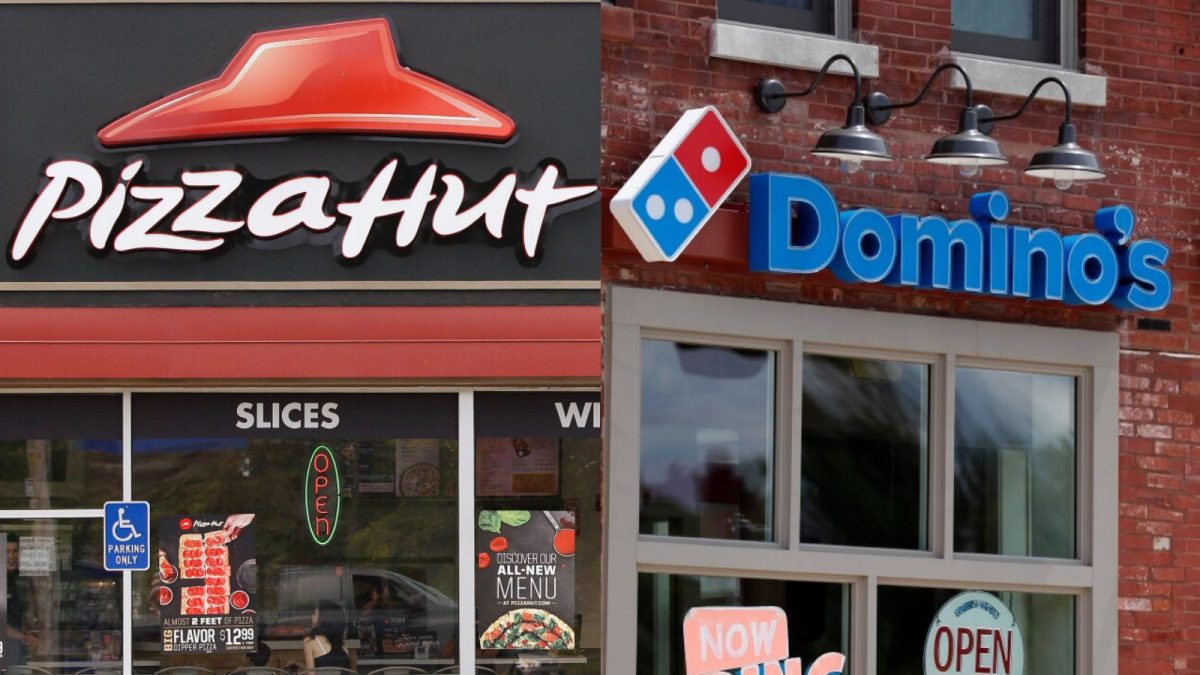Business
PhysicsWallah IPO Day 2 LIVE: Issue Receives 12% Subscription So Far, GMP Falls To Rs 1.5

PhysicsWallah IPO Day 2 Live Updates: The initial public offering (IPO) of PhysicsWallah is witnessing the second day of bidding today, Wednesday, November 12. The Rs 3,480-crore will conclude on Thursday, November 13. The price band has been fixed in the range of Rs 103-Rs 109 apiece. On the first day of bidding on Tuesday, the issue received an 8 per cent subscription.
The IPO includes a fresh issue of Rs 3,100 crore and an offer-for-sale (OFS) of Rs 380 crore by co-founders and promoters Alakh Pandey and Prateek Maheshwari.
Together, the promoters currently hold 80.62 per cent of the company, which will reduce to 72 per cent post-IPO. Notably, none of the early investors will sell their stakes in this offering.
PhysicsWallah IPO Key Dates
Its share allotment will be finalised on Friday, November 14, and the market listing will take place on November 18 on both the BSE and the NSE.
PhysicsWallah IPO GMP Today
According to market observers, unlisted shares of PhysicsWallah Ltd are currently trading at Rs 110.2 apiece in the grey market, which is a premium of Rs 1.5 or 1.38% over the upper IPO price of Rs 109, indicating weak listing.
The GMP had stood at 4.5% a few days ago.
The GMP is based on market sentiments and keeps changing. ‘Grey market premium’ indicates investors’ readiness to pay more than the issue price.
PhysicsWallah IPO: Should You Apply?
Brokerages have expressed mixed views on the much-awaited PhysicsWallah (PW) IPO, with some recommending a cautious approach while others see long-term value in the edtech firm’s growth story.
SBI Securities maintained a ‘Neutral’ stance, saying it would prefer to monitor the company’s performance post listing. The brokerage noted that PhysicsWallah, which offers test-preparation and upskilling courses, ranks among India’s top five edtech companies by revenue. However, it pointed out that the company’s net loss widened from Rs 81 crore in FY23 to Rs 216 crore in FY25, driven by higher depreciation and impairment losses on financial assets.
“At the upper price band of Rs 109, the issue is valued at an EV/Sales multiple of 9.7x based on the post-issue capital, which seems fairly valued,” SBI Securities said.
Incred Equities recommended subscribing to the IPO, stating that PhysicsWallah is “reshaping the industry’s economics”. The brokerage said, “At the upper end of the price band, the IPO is valued at an EV/Sales multiple of 10.7x (based on post-issue capital). This appears demanding, but when placed in the broader context of India’s listed new-age peers, the valuation is broadly in line.”
It compared PW’s valuation to other digital-first players such as PB Fintech (14.4x), Nykaa (8.5x), and Eternal (14.6x), arguing that the market continues to assign premium valuations to scalable, asset-light tech platforms.
Business
Energy surge: India set to become epicentre of global oil demand growth; IEA projects fastest energy expansion to 2035 – The Times of India

India is poised to become the epicentre of global oil demand growth over the next decade, the International Energy Agency (IEA) said in its latest Global Energy Outlook 2025, citing rapid economic expansion, industrialisation, and rising vehicle ownership as key drivers of energy consumption.According to the Paris-based agency, India’s energy demand is projected to rise by an average of 3% annually till 2035, the fastest among all emerging markets and developing economies, PTI reported. The country will account for the largest increase in global oil consumption through 2035, surpassing China and Southeast Asia combined.“China accounted for more than 75% of oil demand growth over the past decade, but this picture is changing. India becomes the new epicentre of growth in oil demand,” the IEA said.India’s oil use is expected to rise from 5.5 million barrels per day (mbpd) in 2024 to 8 mbpd by 2035, driven by growing car ownership, demand for plastics and chemicals, aviation fuel, and increased LPG use for cooking. Nearly half of all additional global oil demand till 2035 will come from India alone, the agency noted.Import dependence to deepenDespite government efforts to boost domestic production, India’s oil import dependency is set to climb from 87% in 2024 to 92% by 2035, the IEA projected. However, the country’s expanding refining capacity — expected to grow from 6 mbpd in 2024 to 7.5 mbpd by 2035 — will position it as a key exporter of transport fuels.“Since 2022, India has emerged as a global swing supplier, refining Russian crude oil that previously went to Europe,” the report said. With 9 mbpd of new refining capacity expected globally between 2024 and 2035, Asia will lead the expansion, with India contributing the largest share.Gas and coal outlookIndia’s natural gas demand is projected to nearly double to 140 billion cubic metres (bcm) by 2035, led by growth in city-gas distribution. LNG imports are also expected to surge, reaching 50 bcm by 2035, up from 35 bcm currently.Coal production, meanwhile, will continue to rise in India — even as it declines globally — increasing by around 50 million tonnes of coal equivalent (Mtce) by 2035. The IEA said this will help limit the growth of coal imports despite strong domestic demand. Coal India Ltd’s expansion of the Gevra mine to 70 million tonnes per year will make it Asia’s largest coal mine, with 36 new mines also planned over the next five years.Energy leadership beyond oilThe IEA described India as “the biggest driver of growth in global energy demand”, with overall consumption projected to rise by over 15 exajoules by 2035 — nearly equal to the combined increase of China and Southeast Asia.India’s GDP is expected to grow at over 6% annually, with transport and industry leading the rise in fuel use. The country’s carbon emissions are likely to peak around 2040 at roughly 3.4 gigatonnes per year.India, which has pledged to achieve net zero by 2070, has already met its target of 50% non-fossil power capacity five years ahead of schedule, in 2025. The share of renewables in installed capacity is projected to reach 60% by 2030 and 70% by 2035, accounting for 95% of new power additions.Solar and wind will make up nearly one-fifth of India’s total energy mix by 2050, the IEA said, adding that solar PV has already attracted $113 billion in investment over the past decade, outpacing fossil fuel projects.
Business
Pizza Hut Up For Sale? How Domino’s Outpaced Its Older Rival Across The World

Last Updated:
Yum Brands is reviewing options for Pizza Hut amid declining market share, facing tough competition from Domino’s, and considering sale, partnership, or divestment

Pizza Hut has struggled against Domino’s, which excels with a delivery-first model and strong digital presence.
Yum Brands has announced that it is reviewing strategic options for its flagship pizza brand, Pizza Hut. In a statement last week, CEO Chris Turner indicated that the brand faces persistent challenges that may require measures beyond the current corporate structure to unlock its full potential. While no timeline has been set, potential options could include a sale, partnership, or stake divestment.
Pizza Hut, founded in 1958, has long been a staple alongside Yum’s other brands, KFC and Taco Bell. Despite its legacy, Pizza Hut has struggled to keep pace with competitors, most notably Domino’s, founded just two years later in 1960. While the brand still enjoys a loyal customer base that appreciates its traditional pizza offerings, declining market performance has prompted Yum to consider structural changes.
Declining US Market Share
Pizza Hut’s share of the US pizza market has steadily eroded over the past decade. According to QSR Magazine, Technomic, and Statista, the US pizza market was valued at approximately $50 billion in 2024. Domino’s leads with a commanding 36% market share, while Pizza Hut’s share fell from 22.6% in 2019 to 18.7%. A closer look at historical trends shows a persistent decline:
| Year | US Sales ($ bn) | Total Market Size ($ bn) | Pizza Hut Share (%) |
| 2010 | 5.4 | 32 | 16.9 |
| 2012 | 5.4 | 35 | 15.4 |
| 2015 | 5.4 | 38 | 14.2 |
| 2018 | 5.5 | 42 | 13.1 |
| 2020 | 5.38 | 45 | 11.9 |
| 2021 | 5.4 | 46 | 11.7 |
| 2022 | 5.27 | 47 | 11.2 |
| 2023 | 5.6 | 49 | 11.4 |
| 2024 | 5.5 | 50 | 11 |
Several factors have contributed to this decline:
1. Heavy reliance on dine-in operations: Pizza Hut’s traditional focus on sit-down restaurants has become a liability in the post-pandemic era, as consumers increasingly prefer delivery and takeaway. Domino’s, by contrast, has thrived with a delivery-first model.
2. Sustained sales decline: US same-store sales fell 6% by Q3 2025, marking a seven-quarter downward streak. Domino’s, in contrast, reported a 5.2% increase. Globally, Pizza Hut’s performance mirrors this trend, with Turkey closing over 300 stores in January 2025 alone.
3. Quality and menu perception: Customer feedback indicates dissatisfaction with Pizza Hut’s dough, taste, variety, and delivery speed, with some citing recipe changes that dilute the brand’s core identity.
4. Technology and innovation gap: Domino’s investments in digital ordering, real-time tracking, and loyalty incentives have strengthened its customer engagement, while Pizza Hut’s campaigns, such as “Adultzz Only”, failed to resonate.
Pizza Wars in India
The competition between Pizza Hut and Domino’s is equally stark in India. The Indian pizza market, valued at around Rs 45,000 crore in 2025, is dominated by Domino’s, which controls over 60% of the market. Pizza Hut holds roughly 20-25%, placing it second but well behind its rival.
- Store presence: Domino’s operates 2,321 outlets, recently adding 81 new locations. Pizza Hut operates 630-637 stores and added 63 in the same period.
- Revenue: Domino’s revenue is estimated between Rs 8,000-10,000 crore, growing 18.8% year-on-year. Pizza Hut generates Rs 1,500-2,000 crore, with slower growth.
- Same-store sales: Domino’s existing stores reported 9.1% growth, with delivery up 20.1%. Pizza Hut’s existing stores grew only 5%.
- Operator focus: Domino’s India is managed by Jubilant Foodworks, which continues to expand aggressively. Pizza Hut is managed by Sapphire Foods, which also operates KFC, though its focus on Pizza Hut appears limited.
The strategic review by Yum Brands underscores the challenges of sustaining a legacy pizza brand in an era dominated by delivery-centric competitors and tech-driven customer engagement. For Pizza Hut, unlocking growth may require a shift in strategy, ownership, or partnerships to reclaim relevance in both domestic and international markets.
November 12, 2025, 16:36 IST
Read More
Business
The factory-built future of British construction

The introduction of the industrial production line in car manufacturing, pioneered by Henry Ford in the early 20th century, revolutionised the automotive industry and global manufacturing practices. But there is one sector that has—remarkably—failed to embrace the full potential of industrialised models of production: construction. Just look at housebuilding—while advanced manufacturing is now utilising robots and AI, in many ways homes are still being built as they were 100 years ago: with contractors laying bricks in muddy fields.
But technologies to modernise construction do exist. At Reds10 we have been pioneering them for more than a decade now, developing highly sustainable, innovative, high-quality modular buildings offsite in our dedicated factories in Driffield, East Yorkshire, for the public sector. These include amazing homes for the military, school buildings and facilities for the Ministry of Justice and the NHS.
However, in the UK this process, known as Modern Methods of Construction or MMC, has yet to enter the mainstream. This is at least in part due to the nature of our housebuilding market, dominated as it is by a small number of large housebuilders, who have a near monopoly over the market and therefore little incentive to drive forward innovation.
In the UK modular construction has also suffered from a perception problem — a hangover from poorly constructed post-war prefabricated buildings. This perception is grossly outdated: a bit like comparing a Morris Marina with a Tesla. Take, for example, our award-winning Imjin Barracks project, a highly sustainable three-storey building that provides the UK’s defence personnel with modern, comfortable and technologically advanced accommodation. Built offsite through our advanced construction techniques, Imjin Barracks, like all the projects Reds10 delivers, is unrecognisable from the much-maligned ‘prefabs’ of yesteryear and is indistinguishable from buildings built through traditional construction techniques.
But it is not just residential developments that can benefit from industrialised construction techniques. Reds10 has been working with the government’s multibillion-pound New Hospital Programme (NHP) to develop a prototype for the new in-patient bedroom that will be delivered in the first wave of state-of-the-art hospitals that will be built over the next five years. The full-scale model room, complete with ensuite and corridor, is now undergoing an incredibly rigorous process of clinical review and testing to ensure it is fully optimised for clinical use —and crucially—before designs are locked and replicated thousands of times (the bedroom alone will be replicated over 3,000 times in just the first wave of hospitals). This means any technical issues can be resolved now, before 11 new hospitals are built simultaneously, ensuring the late‑stage rework that has plagued complex healthcare builds and driven up costs can be avoided.
The advantages of industrialising construction in this way are myriad. Our factory production process is optimised for efficiency using repeatable processes and components, modern manufacturing tools, and advanced technologies that would be impractical on a construction site. The efficiency of factory construction means project delivery timescales can be drastically reduced by up to 50%.
Industrialised construction also greatly improves quality, with fewer post-construction snagging issues. Buildings are more airtight, providing greater energy efficiency without additional cost. And with around 90% of the construction completed in the factory, there is also far less disruption to local communities from works on site.

The efficiency of MMC also means that we can build projects with less labour. Across our pipeline we use around 30% less labour than would be required by traditional construction techniques, which is a real plus given the severe skills shortage that has long afflicted the industry. If construction as a whole industrialised in this way, the skills gap would be bridged.
In our factory settings we also employ our own workforce, investing in their skills and career development and supporting young people into apprenticeships and training opportunities. By other industry standards this may seem unremarkable, but in construction employing your own workforce (rather than managing an ever-growing chain of smaller sub-contractors) is increasingly rare.
Ultimately, MMC and the benefits it brings has huge potential to transform the construction industry, providing better quality, more efficiency, greater cost reductions, higher productivity, and improved sustainability. Industrialising construction in the way Reds10 is pioneering would bring the industry into the 21st century and help deliver the modern homes and infrastructure the country needs.
Learn more about how Reds10 is transforming construction here.
To learn more about E2E and the E2E 100, visit E2E’s official website.
For more information on the E2E Profit 100, and to see the full list of winners click here.
-

 Business1 week ago
Business1 week agoFirst new Amazon electric heavy goods vehicles hit UK roads
-

 Tech1 week ago
Tech1 week agoThe Security Interviews: Colin Mahony, CEO, Recorded Future | Computer Weekly
-

 Fashion1 week ago
Fashion1 week agoGermany’s Adidas achieves highest-ever quarterly sales in Q3 2025
-

 Business1 week ago
Business1 week agoReeves lays ground for painful Budget, but will it be worth it?
-

 Business7 days ago
Business7 days agoSetback for expatriates? Delhi HC upholds mandatory EPFO membership; what this means for foreign staff – The Times of India
-

 Business1 week ago
Business1 week agoHow To Claim Investments Of Deceased Holders: A Step-By-Step Guide For Mutual Funds & Bank Accounts
-

 Sports1 week ago
Sports1 week agoAryna Sabalenka to face Nick Kyrgios in Battle of the Sexes tennis showdown
-

 Tech1 week ago
Tech1 week agoTech Traveler’s Guide to Seattle: Where to Stay, Eat, and Recharge







